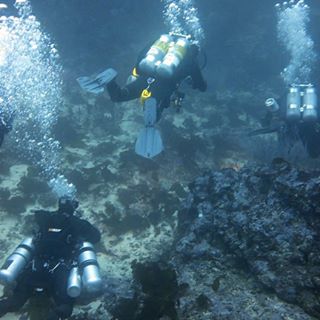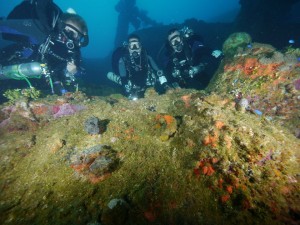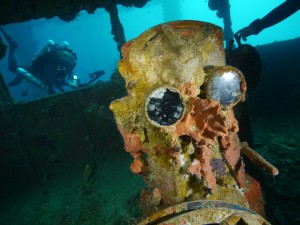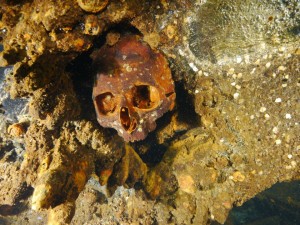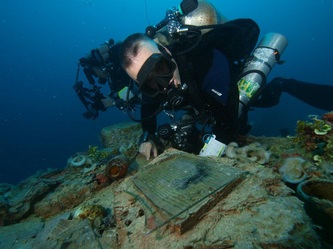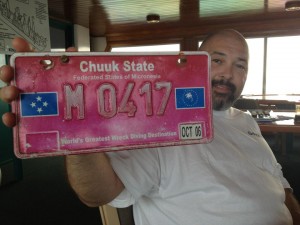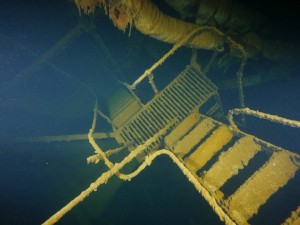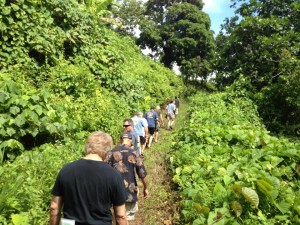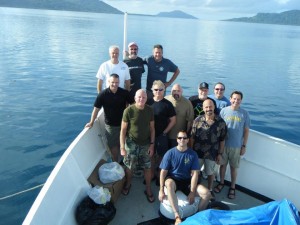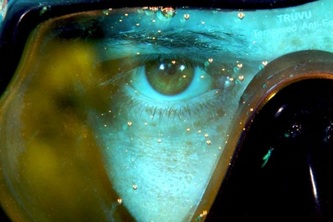Enjoy some articles written by D.J. Mansfield (all rights reserved)!
Selecting the Right Dive Computer
Deep diving and you
The 30-Dive Challenge for 2021!
The buoyancy cycle - techniques to achieving a good balance
Diving in California
2021 Calendar of Events for Southern California
Southern California's best dive encounters
Life in the Scuba Shop
Benefits of becoming a scuba diver
Checklists and Acronyms - A diver's guide to success
COVID-19 A look forward
Orange County's Coastal Clean Up Efforts
Scuba Diving in Laguna Beach, California
2020 Calendar Events for Southern California
Why I dive.
Exposure protection - making decisions on your diving Part 2
Exposure protection - making decisions on your diving Part 1
Becoming a better diver!
An Air Hog's Diary - Improving your air consumption while diving!
Orange County Scuba Dive Sites
Buoyancy Control
Scuba Diving in Southern California
Truk Lagoon
The Pressure, Volume, Density Relationship
Best Places to Dive in Southern California
Top reasons to get scuba certified
The #1 Dive Site in Orange County
The Top 3 Orange County Boat Dive Spots
Scuba Diving in Orange County, California - The Top Three Spots
Selecting the Right Dive Computer
Deep diving and you
The 30-Dive Challenge for 2021!
The buoyancy cycle - techniques to achieving a good balance
Diving in California
2021 Calendar of Events for Southern California
Southern California's best dive encounters
Life in the Scuba Shop
Benefits of becoming a scuba diver
Checklists and Acronyms - A diver's guide to success
COVID-19 A look forward
Orange County's Coastal Clean Up Efforts
Scuba Diving in Laguna Beach, California
2020 Calendar Events for Southern California
Why I dive.
Exposure protection - making decisions on your diving Part 2
Exposure protection - making decisions on your diving Part 1
Becoming a better diver!
An Air Hog's Diary - Improving your air consumption while diving!
Orange County Scuba Dive Sites
Buoyancy Control
Scuba Diving in Southern California
Truk Lagoon
The Pressure, Volume, Density Relationship
Best Places to Dive in Southern California
Top reasons to get scuba certified
The #1 Dive Site in Orange County
The Top 3 Orange County Boat Dive Spots
Scuba Diving in Orange County, California - The Top Three Spots
Enjoy these Independent Articles by authors writing about us!
A.C.E. Becomes Southern California's Newest Dive Site
Double-Crossing Death on the Pacific: An account of the sinking of a ship named the A.C.E. off the Southern California Coast...
Final Dana Point Harbor cleanup: Divers find the strangest things in the murky ocean water - Warning: Super Long Beard moment.
U.S. flag, bong, TV among 6,000 pounds of junk found in Dana Point Harbor cleanup
A.C.E. Becomes Southern California's Newest Dive Site
Double-Crossing Death on the Pacific: An account of the sinking of a ship named the A.C.E. off the Southern California Coast...
Final Dana Point Harbor cleanup: Divers find the strangest things in the murky ocean water - Warning: Super Long Beard moment.
U.S. flag, bong, TV among 6,000 pounds of junk found in Dana Point Harbor cleanup
dana harbor clean up 2016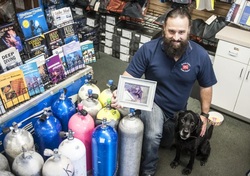
September 2016
DANA POINT – For DJ Mansfield, Saturday’s final harbor dive will be bittersweet. It’s the conclusion of a seven-year project that has helped improve water quality in the Dana Point Harbor. When he dives off Dock F, the last dock on the harbor’s north end, Mansfield, 38, will have scoured the ocean floor beneath 2,409 boats over seven years, helping remove tens of thousands of pounds of trash and debris. “As humans you want to make the world a better place,” said Mansfield, who retired from the Marine Corps in 2015. “On an environmental note, nothing is more disturbing than looking at beautiful fish and knowing that something as cliche as a simple six-pack plastic soda holder can badly affect sea life.” The director of operations for five Beach Cities Scuba shops in Orange County will be among more than 100 divers who will descend 15 feet to scour the murky water and gooey harbor bottom along 170 boat slips at the dock. The cleanup – the 15th semi-annual event – is part of Dana Point Harbor’s effort to improve water quality. Divers will search search for treasures, trash and oddities lost or discarded into the harbor. Marine debris degrades ocean habitats, endangers marine and coastal wildlife, causes navigation hazards and threatens human health and safety, said Kelly Rinderknecht, from Dana West Marina, who with OC Parks is organizing the cleanup. In past years divers have come from Orange County and neighboring Riverside and Los Angeles counties, Rinderknecht said. Saturday’s event coincides with California Coastal Cleanup Day – the state’s largest volunteer coastal cleanup event. Dana Point Harbor will also host a cigarette butt roundup on the harbor’s island side. Since 2009 when the first cleanup was held, divers have recovered more than 60,000 pounds of lost items and debris. The odd findings have included chairs, televisions, laptops, marine toilets, outboard motors, bicycles, shopping carts and even a parking meter. Mansfield discovered the parking meter complete with attached cement. It was at a dock near the Wind & Sea Restaurant on the east side of the harbor. “I felt what seemed like a shaft,” Mansfield recalled. “I started to pick it up. It was really heavy so I hooked up a float line. When we brought it up it was covered in barnacles.” Mansfield and other divers used crow bars to chip away the barnacles. They finally broke the encrusted barnacles open with a sledge hammer. “I just started laughing,” Mansfield said. “I couldn’t believe it was a parking meter. We wondered what the story was on how it got there.” Another year, Mansfield was among a group who pulled up a kayak – intact. They couldn’t figure out how it sank. “We’ve pulled out tool boxes and expensive watches,” he said. “Anything you can think of a human dropping, it’s in the drink in the harbor.” Mansfield, who oversees dive shops in Dana Point, Laguna Beach, Newport Beach, Huntington Beach and Cypress, said he has recruited 53 divers so far to join the cleanup. At least 40 more divers have signed up with Rinderknecht. Diving has become a passion for the retired master sergeant. He first discovered it in 2000 while based at Camp Pendleton and has since done nearly 3,000 dives. He’s taken advantage of exotic dive spots all over the world, including the Seychelles and Thailand, and hopped aboard Navy ships when he could. When he found out about the cleanup, it became his mission to help. He started in 2009 and participated between deployments to Iraq and Afghanistan. “I learned about caring for the community in the Marine Corps,” Mansfield said. “You end up in a foreign country and there’s a good deal of compassion. You learn quickly how you can help people. When you’re back here and off work and off base, you help the community you’re in. That’s what the harbor cleanup has done for me.” Contact the writer: 714-796-2254 or [email protected] |
socorro's islands 2015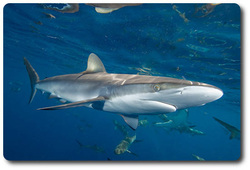
November, 2015
That one time when a Silky Shark thought we may have been his next meal....and the procedures we did to mitigate getting eaten. At first, I believed that a catchy title would be the element required to get someone to continue reading. I can tell you that this is a true story and that our procedures to get out of the situation may be the greatest anti-shark bite procedure in the world. At least in my own opinion. Mainly because we encountered a shark, didn't get bit, and survived to tell the story. So, there we were. Upon completion of twenty illustrious years in the United States Marine Corps, my significant other and I embarked upon a two-week vacation that encompassed a week in Cabo San Lucas and a week on the Nautilus Belle Amie. A beautiful live-aboard boat that hosted us for some of the most amazing diving in the Socorro's Islands. We were on our last dive (insert scary music here) at a location known as Roco Partida. This literally means 'split rock' and boasts a depth of 164ft and is even more remote than the already remote Socorro Island. Needless to say, the dive site was absolutely amazing. Tuna, sharks, giant mantas and a plethora of sea life circled around this lonely rock in the middle of the Pacific. At the end of the dive, my dive buddy/love of my life decided to end our dive and execute our safety stop after forty minutes of amazing dive time. That's when we met Carcharhinus falciformis (from here on, we'll call him Ted). He had smooth, gray skin, about 10 foot long and beady little eyes that said "I'm interested in eating everything here..." So, Ted decided that the two divers dangling from their Surface Marker Buoy (SMB) must be pre-dusk treats. He was more than likely elated that his long night of hunting would be over in just a few short minutes when he sank his jaws into this meaty morsel (from here on, we'll call 'meaty morsel' - me...maybe us, but the truth is that I was left alone - read ahead...). Recognizing that Ted was interested in us, Tiffany (dive buddy/love of my life) immediately went back to back with me. I'm sure her first thought was "I don't have to swim fast, just faster than D.J." We had a second SMB available and I grabbed it from Tiffany. My opinion was that if Ted decided to come in, he could eat the SMB first and not my leg. He was slowly circling and watching us as I went about my business of getting the back-up SMB in place while pulling down on the one I had on the surface. I was hoping that the small chase boats around the Belle Amie would see a flailing SMB and figure out something is up! Which they did see. Because a chase boat made its way over to us immediately! As Ted and I stared at each other, he finally got bored and decide it was time to make his approach. As he closed in, I put the SMB between us and then swiftly kicked him in the nose. After doing some research on Ted's species, I found out that kicks to the nose only work effectively against sharks who Lloyd Bridge's fought in Sea Hunt. For Ted, it only made him more mad. He began to circle more aggressively. In about five seconds, I realized that I was in the water by myself. Tiffany had surfaced, met the boat and literally rocketed herself out of the water in full gear and landed safely in the skiff! It was the first time I ever heard of a woman walking on water! So, there I was. Alone. Ted came in one more time, but was not nearly as interested in getting kicked in the nose again. He side swiped me and when he turned his back to me, I came up and jumped into the boat with full gear on. The rescuer of our little issue wasn't even our normal tender! He looked at me and said "What's up, mate?" I must have looked extremely tough with all of the blood out of my face and my eyes bulging out of my mask while I flailed for balance in the tiny boat. We had a good laugh about it, but it reminded me that looking at these beautiful animals garners a great deal of respect for them as well. I absolutely love diving with sharks. I've done it many, many times. But, you have to remember you are in their environment. If you respect that, you'll be able to laugh at close calls and remain vigilant as a diver who enjoys world travel! This true story was brought to you by D.J. Mansfield and the letter "K". |
truk lagoon 2012In order to fully appreciate Truk Lagoon, one must go back to 1944. To Torakku (the airstrike on Truk Island). The Americans know it as Operation Hailstone. Where Marc Mitscher and Masami Kobayashi went head to head in an American led attack on one of Japan’s largest logistical bases. The action was devasting to the Japanese fleet. But, with tactical forethought, Kobayashi realized that Truk was becoming vulnerable and moved many of their war ships to another great dive destination known as Palua. In the end, the Japanese lost 3 cruisers, 4 destroyers, 3 auxiliary cruisers, 2 submarine tenders, 3 smaller warships, 32 merchant ships, and 270 aircraft. Many of the ships were unmanned, but there were many Japanese lives lost that day. 40 Americans were killed. The attack changed the tempo of the war itself. Minimizing Truk had opened up attacking into Palua, Guam, Saipan and Iwo Jima. Japan never fully recovered from this devastating blow and Truk would remain isolated by the Americans until the Japanese surrender in 1945.
Sixty-eight years later, 12 men embarked on a journey from Los Angeles to Truk in order to visit 13 of the ships located here. We visited the following wrecks: Kiyosumi Maru Yamagiri Maru Fumitzuki Shinkoku Maru I-169 Submarine Gosai Maru Rio de Janeiro Maru Hoki Maru Fujikawa Maru Nippo Maru Heian Maru San Fransisco Maru Kansho Maru Each wreck had its own personality and its own story. An excellent historical account of each ship’s fate is located in Dan Bailey’s book World War II Wrecks of the Truk Lagoon (ISBN 0911615067). From serving as a submarine tender to carrying millions worth of cargo, each dive was different and equally amazing! To say that the team took thousands of pictures and video would be an understatement. On board the San Francisco, the crew explored hundreds of heavy-duty landmines destined for a not-so-distant battlefield. They also viewed tanks and anti-aircraft guns sitting on the decks waiting for a crew to man them against their enemy. On the Fumitzuki, Jeff Rey took beautiful footage of the gigantic propeller blades and actual books where you can still view the Kanji script. On the Yamagiri, the compelling evidence that battle does not come at an easy price was apparent as we were presented with the remains of a Japanese national. The skull staring into the depths reminded all of us that this was a very real event with very real consequences. Every night was marked with an excellent dinner followed by dessert. Most of the team would move on to dive planning for the next day or sit in the recreation room swapping dive stories and pictures while playing the latest comedy on the television. Each morning, we’d get up bright and early for the dive briefing and start our next adventure into the depths of the Lagoon. It was certainly a trip that won’t be lost in memory for the 12 of us. I know that I am looking forward to the next adventure to Cozumel (June 23rd, 2012) and Fiji (October 2012), but this trip was definitely one of my favorites. If you truly want to get away to enjoy warm waters and beautiful diving; I highly suggest you give us a call and go on our next adventure! The trips are affordable and the memories are forever. |
a.c.e. wreck in dana point 2010December 2010
We pulled up yesterday at 8 a.m. The weatherman had called for warm temperatures and they couldn’t have been more correct in their assessment. It was 70 degrees outside at 8 a.m. and the water was like glass. Every few minutes you’d see a small swell slide under the boat; but other than that, it was smooth as glass. I gathered up our team and went through our briefing. We had some work to do on this second dive. Our mooring lines needed attention and we decided that we should set up an Advanced Line for instructors visiting the wreck. As we decended into the depths, it was apparent that this second dive would be better than the first. At 82 feet, I could see the wreck clearly. She sits in 115 feet of water and rises to about 90 feet. But, here I was looking at the entire wreck! I descended and cut the first line and started setting up the Advanced Line while Bobby worked on disconnecting the clevis from the original mooring line. The team swung over and enjoyed looking at the riggings and the beautiful metridiums that are decorated all over the A.C.E. On the seafloor, Chob sat on the bottom on his knees and snapping picture after picture. I couldn’t wait to see those pictures! I knew that they would be good with the 30+ feet of visibility today. Scott Marshutz was on my team and after we were done lowering the mooring rig (a feat that took about three minutes), we wandered over to the wheelhouse of the A.C.E. You see, Scott has been investigating the A.C.E. since her discovery. He has contacted numerous crew members and has probably forgotten more about this wreck than I’ve ever known. Our mission on this dive was to find a personal article to take back to the Captain. Once Scott realized what I was pulling on, he started to help. We slowly pulled the jacket and started our ascent back to the surface. I could feel hard stuff in the pockets, so I hoped that it was a wallet or something that we could return to the rightful owner. When we reached the surface, we searched the jacket to find nothing. But, now Scott has something to return to the Captain of the A.C.E. We made a deal that we would bring one thing from the wreck and that was it. Now, we have left everything on board and this wreck is sitting on the seafloor with everything she had on her when she sank. how to not do a tank shut off drill.....Below if one of my favorite videos of when I first started technical diving. Unfortunately, my really good friend was video-taping during this. So, it makes it much more entertaining to know that it ended up on YouTube for all to see. I could write a very entertaining story here, but I think the video will spell it out quite nicely.
Rest in Peace Tim Mitchell. Mentor, Instructor, Friend. |

